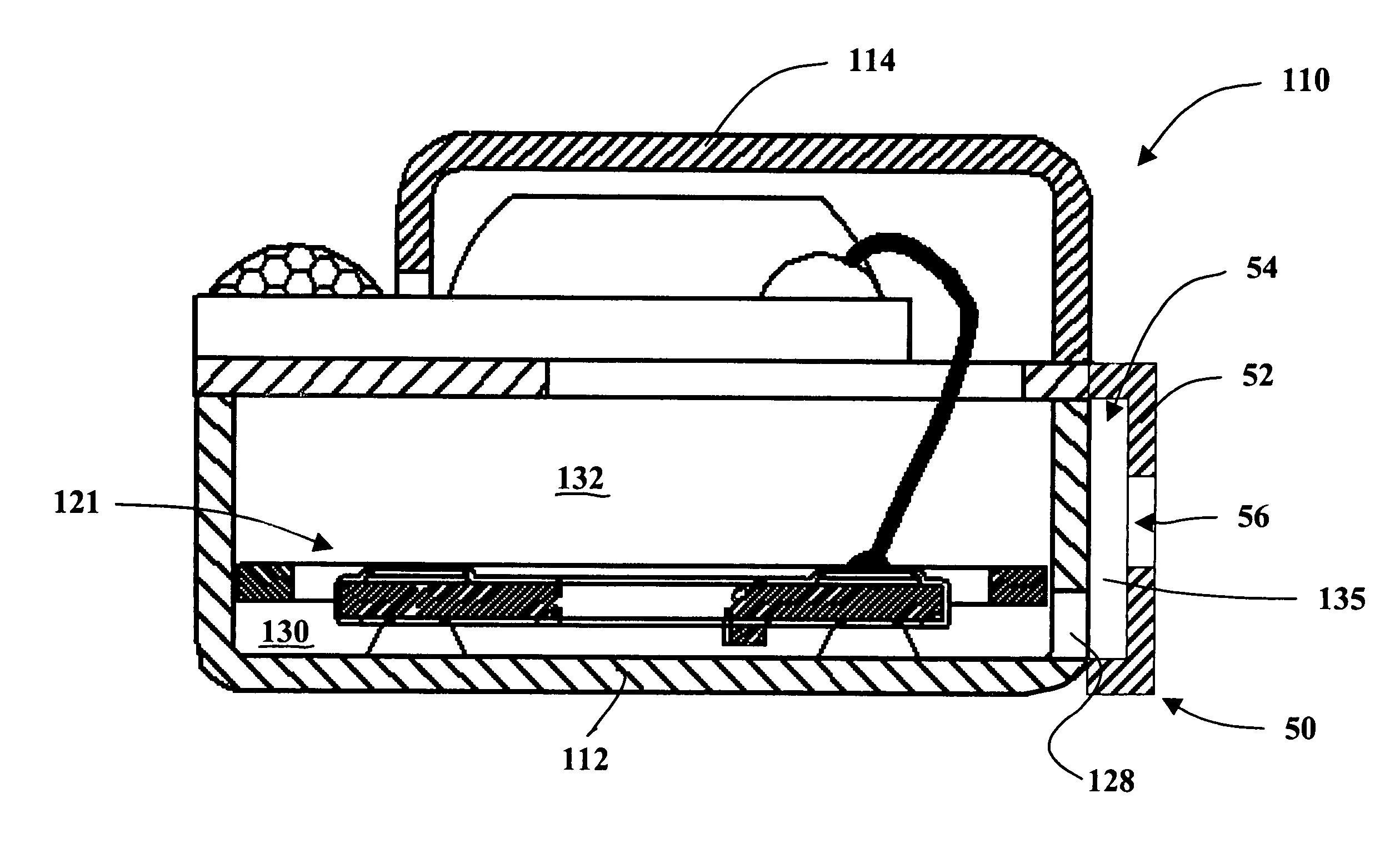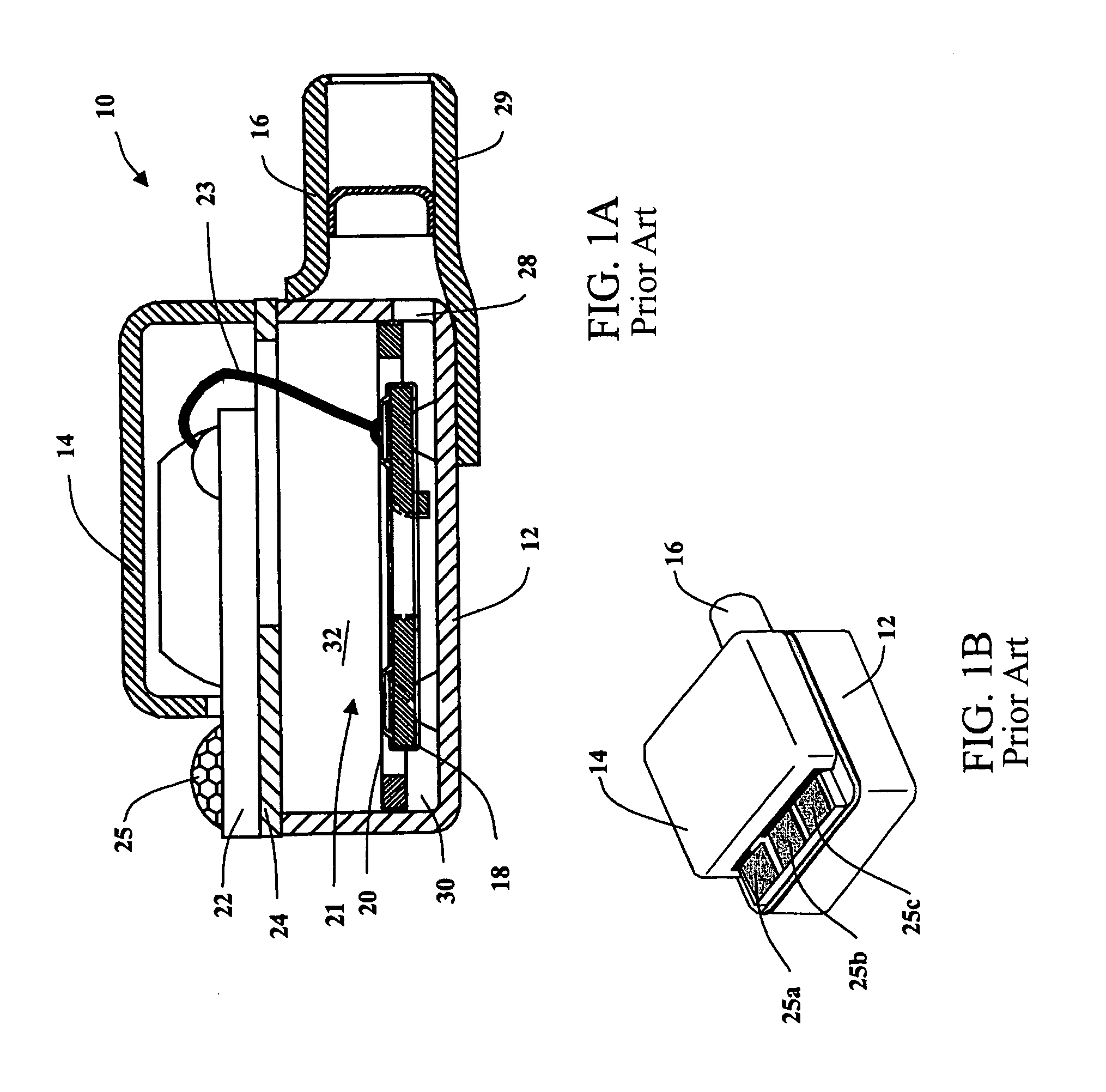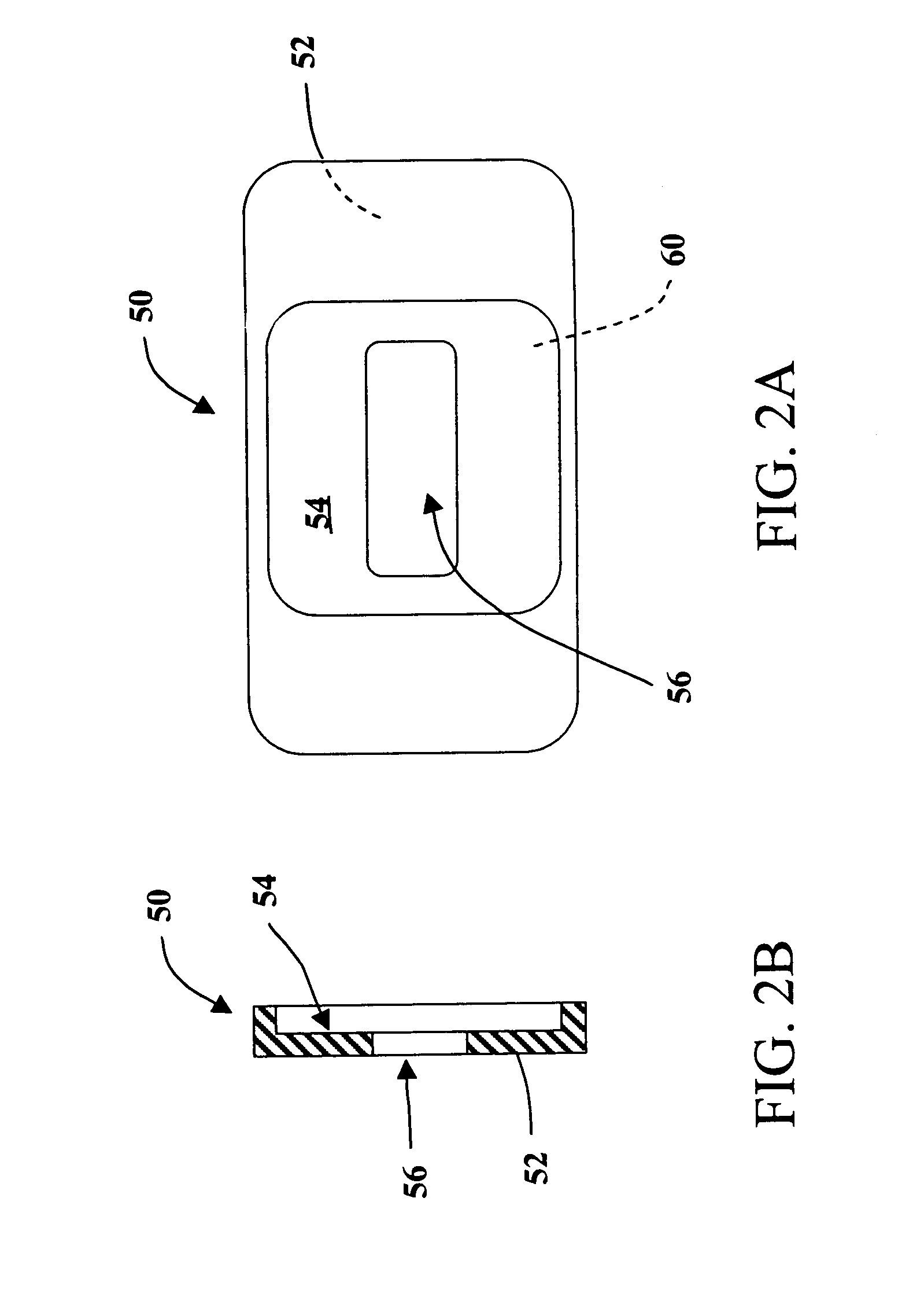Microphone with improved sound inlet port
a technology of inlet nozzle and microphone, which is applied in the direction of transducer types, mouthpiece/microphone attachments, frequency/directions obtained arrangements, etc., can solve the problem of large dimensions of the inlet nozzle, and achieve the effect of facilitating the installation of the microphon
- Summary
- Abstract
- Description
- Claims
- Application Information
AI Technical Summary
Benefits of technology
Problems solved by technology
Method used
Image
Examples
Embodiment Construction
[0017]FIGS. 1A–1B illustrate a typical prior art microphone 10 The microphone 10 includes a case or housing 12, a cover 14, and a sound inlet nozzle 16 through which sound enters the housing 12. Within the housing 12, a backplate 18 having a charged electret layer works in conjunction with a moveable diaphragm 20 to convert (i.e., transduce) the sound into an electrical signal. The combination of the backplate 18 and the diaphragm 20 is generally referred to as an electret-type transducing assembly 21, although the present invention is useful with other types of transducing assemblies, as well
[0018]A printed circuit board 22 is mounted on a mounting plate 24 The signal from the transducing assembly 21 is sent to the printed circuit board 22 via a wire connection 23 The signal is processed on the printed circuit board 22 (e.g. amplified) to produce an output signal Because only a portion of the printed circuit board 22 is covered by the cover 14, one of the set of contacts 25a (FIG. ...
PUM
 Login to View More
Login to View More Abstract
Description
Claims
Application Information
 Login to View More
Login to View More - R&D
- Intellectual Property
- Life Sciences
- Materials
- Tech Scout
- Unparalleled Data Quality
- Higher Quality Content
- 60% Fewer Hallucinations
Browse by: Latest US Patents, China's latest patents, Technical Efficacy Thesaurus, Application Domain, Technology Topic, Popular Technical Reports.
© 2025 PatSnap. All rights reserved.Legal|Privacy policy|Modern Slavery Act Transparency Statement|Sitemap|About US| Contact US: help@patsnap.com



